Understanding Neurological Disorders: In-Depth Insights
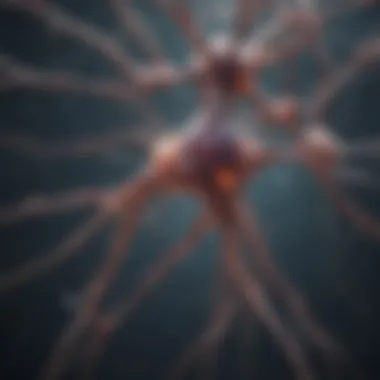
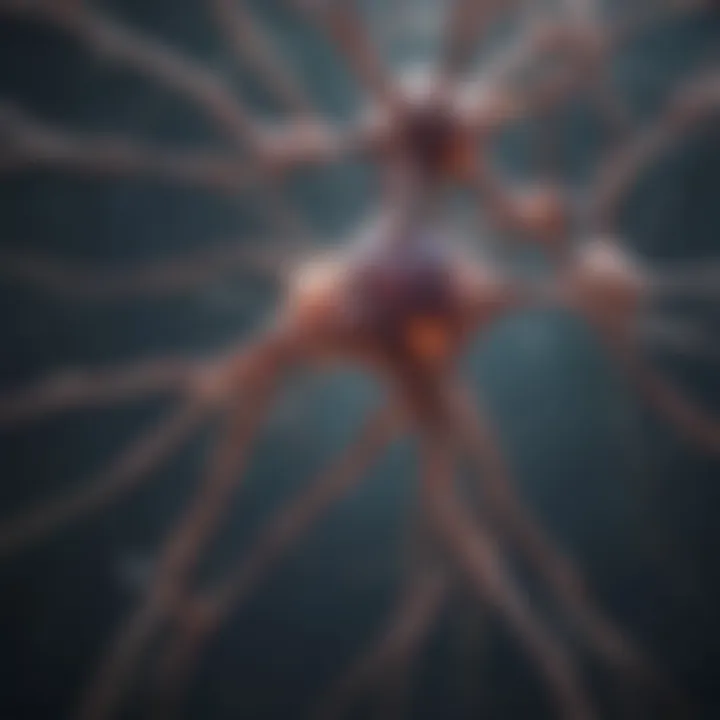
Intro
Neurological disorders encompass a vast range of conditions that impact the brain, spinal cord, and peripheral nerves. Understanding these disorders is crucial given their prevalence and the significant impact they have on individuals and public health. This article delves into the intricate nature of neurological disorders, exploring variables such as definitions, classifications, causes, symptoms, and treatments.
As we investigate this complex field, we will examine not only the well-known disorders like Alzheimer’s disease or Parkinson’s disease but also lesser-known conditions. It is essential to address both common and rare disorders, as each contributes to the overall understanding of neurological health.
Research into neurological disorders is continually evolving. Advances in techniques and methodologies are essential as scientists seek to grasp the complexities behind diseases like multiple sclerosis or epilepsy. The implications of lifestyle choices and environmental factors also merit attention, as they increasingly play a role in the likelihood of developing these disorders.
Furthermore, a multidisciplinary approach is important in the treatment of neurological conditions. Integrating insights from various fields can lead to better management strategies and improved patient outcomes.
In the following sections, we will systematically explore relevant research, methodologies applied in the field, and summarize the current understanding of neurological disorders, emphasizing the need for a holistic view that considers various influences and advancements in this crucial area of health.
Prelims to Neurological Disorders
Neurological disorders encompass a wide range of health conditions that affect the brain, spinal cord, and nerves throughout the body. An understanding of these disorders is vital, as they can significantly impact an individual’s quality of life. The increasing prevalence of these conditions highlights the need for awareness, diagnosis, and effective treatment options. In this article, we will provide a detailed exploration of neurological disorders, crucial for students, researchers, educators, and healthcare professionals alike.
Defining Neurological Disorders
Neurological disorders are characterized by disturbances in the function of the nervous system. This includes conditions like Alzheimer’s disease, Parkinson’s disease, epilepsy, and multiple sclerosis. These disorders can result from various factors such as genetic predispositions, environmental influences, or other underlying health issues. Understanding what constitutes a neurological disorder involves recognizing the complexities of the nervous system and its vital role in almost every function of the human body.
Prevalence and Incidence
The prevalence of neurological disorders is rising globally. According to various studies, it is estimated that over a billion people are affected by some form of neurological condition. This statistic encompasses both common disorders, such as migraines and stroke, and rare conditions like Huntington's disease. The growing aging population contributes significantly to this incidence, as age is a major risk factor for many neurological disorders.
Understanding the prevalence aids in planning for health services and creating awareness campaigns targeted towards early diagnosis and treatment. It also emphasizes the importance of research into new therapies and preventive measures.
"The global burden of neurological disorders presents a pressing health challenge, demanding increased research focus and public health initiatives."
In summary, the exploration of neurological disorders encompasses diverse definitions, prevalence rates, and establishes the context for further examination of classification, symptoms, and treatments throughout the article.
Classification of Neurological Disorders
Classifying neurological disorders is essential for both understanding the disorders themselves and for structuring treatment approaches. The categories help healthcare professionals communicate about specific conditions efficiently. They also guide researchers in identifying patterns or associations among various disorders, factors related to them, and potential interventional methods. Classifying neurological disorders allows for more targeted therapy, more accurate prognoses, and a better understanding of how distinct disorders can affect individuals.
Acute vs. Chronic Conditions
Acute neurological disorders present suddenly and often require immediate medical attention. They may result from trauma, strokes, or seizures. The symptoms tend to be severe in the short term but may dissipate or lead to recovery after treatment. An example of an acute condition is a transient ischemic attack (TIA), which signifies a temporary disruption in blood supply to the brain.
Chronic conditions, in contrast, develop gradually and persist over time, often worsening as the disease progresses. These conditions, like Alzheimer’s Disease or Multiple Sclerosis, often require long-term management. Patients may endure episodic flare-ups and varying degrees of disability. Having a clear understanding of whether a disorder is acute or chronic helps in the formulation of treatment strategies and patient care plans.
Primary vs. Secondary Disorders
The classification of neurological disorders also distinguishes between primary and secondary conditions. Primary disorders arise directly from neurological dysfunction, such as in the case of Epilepsy, where electrical disruptions in the brain lead to seizures. These conditions are intrinsic to the nervous system.
Secondary disorders are those that stem from other underlying medical issues. For example, if a tumor presses against a nerve, the resulting symptoms could reflect a secondary neurological disorder. Understanding whether a disorder is primary or secondary influences diagnosis and treatment approaches significantly. This classification stresses the need for accurate diagnoses, as treating secondary conditions may require entirely different strategies compared to primary disorders.
Common vs. Rare Disorders
Another vital classification involves common versus rare neurological disorders. Common disorders like Parkinson's disease and migraines affect a substantial portion of the population. Awareness, research funding, and treatment resources tend to be more abundant for these conditions.
On the other hand, rare neurological disorders, such as Amyotrophic Lateral Sclerosis (ALS), often receive less attention. These conditions face challenges in terms of research and treatment, as there may be fewer cases and less data available for scientists and healthcare practitioners to study. The rarity can also complicate diagnosis and lead to delays in treatment.
In summary, understanding the classification of neurological disorders provides crucial insights into their characteristics, treatment, and the broader challenges faced in the medical community. This form of classification underpins the systematic study and thorough exploration of neurological health.
Common Neurological Disorders
Common neurological disorders have significant relevance in this article as they represent the most frequently encountered conditions affecting the nervous system. Understanding these disorders is crucial because they impact millions globally, making awareness and knowledge essential for early diagnosis and effective treatment. These conditions can severely affect daily living, and their implications extend beyond the individual to families, communities, and healthcare systems.
Various factors contribute to the high prevalence of common neurological disorders. These factors include age, genetics, lifestyle choices, and environmental conditions. It is important to focus on educating all stakeholders—healthcare professionals, patients, and families—about the symptoms and progression of these disorders to enhance quality of life and care.
Alzheimer's Disease
Alzheimer's Disease is a progressive and degenerative disorder constituting one of the most common causes of dementia. It primarily affects cognitive functions, such as memory, thinking, and reasoning. The disease begins gradually and worsens over time, creating significant challenges for affected individuals and their caregivers.
The hallmark of Alzheimer's includes the accumulation of amyloid plaques and tau tangles in the brain. These changes disrupt communication between neurons, leading to cell death. Typical symptoms involve memory loss, confusion about time or place, and difficulties in communication.
Parkinson's Disease
Parkinson's Disease is another prevalent neurological disorder characterized by a gradual decline in movement control. It stems from the death of dopamine-producing neurons in the brain, leading to tremors, stiffness, and bradykinesia, or slowed movement.
As the disease progresses, many people with Parkinson's will experience not only motor symptoms but also non-motor symptoms, such as depression, sleep disturbances, and cognitive decline. Understanding the multifaceted nature of Parkinson's is crucial for healthcare providers to develop tailored treatment plans.
Multiple Sclerosis
Multiple Sclerosis (MS) is a chronic autoimmune condition that affects the central nervous system. It occurs when the immune system mistakenly attacks the protective covering of nerves, called myelin. This demyelination disrupts communication between the brain and the rest of the body.
Symptoms of MS can vary widely, including fatigue, vision problems, and mobility issues. The unpredictable course of MS can be very challenging for both patients and families.
Epilepsy
Epilepsy is a neurological disorder marked by recurrent seizures due to abnormal electrical activity in the brain. It can arise from various causes, including brain injury, genetics, or infections.
Different types of seizures can vary greatly in severity and manifestation, from mild episodes that may be unnoticeable to severe convulsions that warrant immediate medical attention. Public awareness of epilepsy is important for reducing stigma and ensuring that individuals affected receive proper support and care.
Understanding common neurological disorders fosters a collaborative effort among researchers, clinicians, and the community alike. By gaining insight into these conditions, we pave the way for improved diagnostic tools and treatment approaches.
Rare Neurological Disorders
Rare neurological disorders are significant in the realm of neurology due to their unique challenges and implications for patients and the healthcare system. Although they may affect a smaller portion of the population compared to more common conditions, their complexity often results in profound impacts on quality of life. Awareness and understanding of these disorders can lead to better diagnosis, treatment, and support for patients and their families.
Huntington's Disease
Huntington's Disease is a hereditary condition marked by progressive degeneration of nerve cells in the brain. Patients often experience movement disorders, cognitive decline, and psychiatric complications. The symptoms typically manifest between ages 30 and 50, making it difficult to manage both for patients and caregivers. Genetic testing plays a crucial role in determining risk, allowing for early diagnosis and intervention strategies.
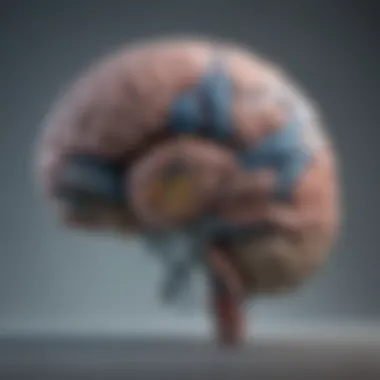
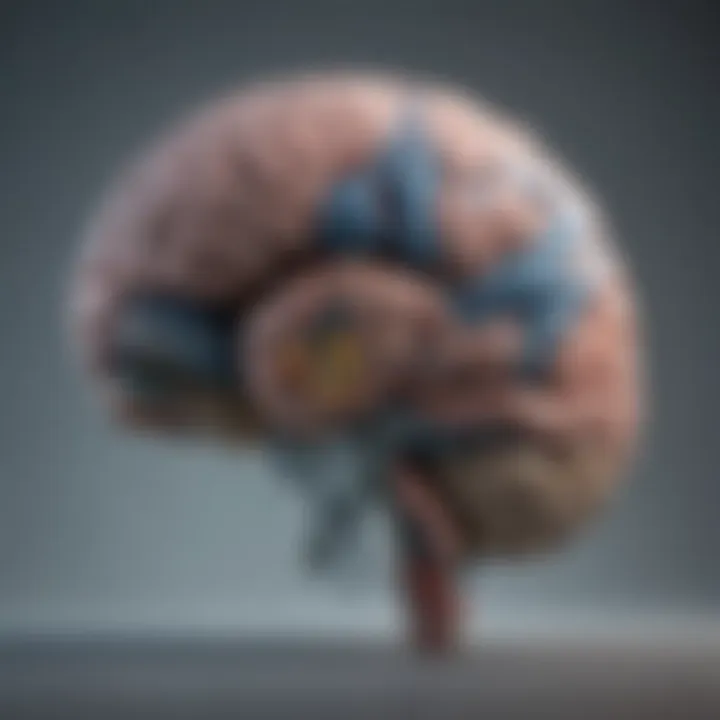
The impact of Huntington's is not only on individuals but also extends to families, as it follows an autosomal dominant inheritance pattern. Knowing whether a family member is affected can lead to complex emotional and ethical decisions regarding testing and potential future care.
Amyotrophic Lateral Sclerosis (ALS)
Amyotrophic Lateral Sclerosis, commonly known as ALS, is another rare condition characterized by the gradual degeneration of motor neurons. This leads to loss of voluntary muscle control, which can severely limit mobility and communication. The onset often occurs in mid-adulthood and varies widely among individuals in terms of progression and symptoms.
ALS is particularly notable because it can be devastating both physically and emotionally. Patients often require extensive support and adaptive technologies. Research is ongoing to uncover the underlying mechanisms of ALS and develop effective treatments, as current options primarily focus on symptom management and maintaining quality of life.
Rare Genetic Disorders
Rare genetic disorders encompass a wide range of conditions caused by abnormalities in the genes. The diversity of these disorders can lead to unique symptoms and presentations, often complicating diagnosis. Many of these conditions are also progressive and require lifelong management. Collaboration between geneticists, neurologists, and other specialists is critical to ensuring comprehensive care.
Early diagnosis of rare genetic disorders can lead to better outcomes for patients, emphasizing the need for increased awareness and ongoing research. Genetic counseling and support systems for affected families are also crucial in navigating the complexities of these conditions.
The study of rare neurological disorders not only enhances medical knowledge but also emphasizes the importance of advocacy and resource allocation for research and patient support. By increasing understanding in this area, we can develop more effective strategies to address the needs of those affected by these lesser-known conditions.
Causes of Neurological Disorders
Understanding the causes of neurological disorders is fundamental in diagnosing and treating these conditions effectively. The etiology of such disorders can be multifaceted, involving a blend of genetic, environmental, and infectious factors. Recognizing these contributors is vital not only for developing effective treatment strategies but also for implementing preventive measures. Awareness of causes guides researchers and medical professionals in their quest for innovative solutions and raises public understanding of neurological health.
Genetic Factors
Genetic factors play a significant role in many neurological disorders. Mutations or variations in specific genes can predispose individuals to conditions such as Alzheimer's disease and Huntington's disease. These genetic anomalies can be inherited or arise sporadically.
- Familial Diseases: Certain disorders can run in families, pointing to inherited genetic mutations.
- Sporadic Cases: Other neurological disorders occur without a family history, suggesting that new mutations or environmental interactions might trigger the condition.
- Gene-Environment Interactions: It's essential to consider how genes may interact with environmental factors, influencing the expression of genetic predispositions.
In research, identifying specific genes associated with these disorders aids in assessing risk, paving the way for potential gene therapies.
Environmental Influences
Environmental factors can also significantly contribute to the development of neurological disorders. Various elements in an individual’s surroundings may increase susceptibility to these conditions.
- Toxic Exposure: Long-term exposure to neurotoxins, such as heavy metals or pesticides, can lead to cognitive decline or conditions like Parkinson's disease.
- Lifestyle Choices: Factors like smoking, alcohol consumption, and diet can impact neurological health. For example, diets low in certain nutrients may correlate with higher risk for neurological issues.
- Stress and Trauma: Chronic stress may influence the brain's health and its functioning, potentially triggering or exacerbating neurological disorders.
Research in this area is increasingly focused on understanding how mitigating these environmental risks can improve overall neurological health.
Infections and Inflammation
Infections and inflammatory processes also play a critical part in the onset of neurological disorders. Some conditions arise directly from infectious agents, while others may be a consequence of the body's inflammatory response.
- Viral Infections: Certain viruses, such as the West Nile virus or Zika virus, can result in neurological complications.
- Autoimmune Responses: Disorders like multiple sclerosis are characterized by the immune system attacking the nervous system, often preceded by infections.
- Chronic Inflammation: Long-term inflammation in the body can damage neural tissues and is implicated in various neurological disorders.
Understanding the role of infections and inflammation is critical for developing targeted treatment strategies that can address these underlying causes effectively.
The interplay between genetic, environmental, and infectious factors underscores the complexity of neurological disorders. Recognizing this can inform both preventive and therapeutic approaches.
Symptoms of Neurological Disorders
Understanding the symptoms of neurological disorders is crucial for diagnosis, treatment, and management. Neurological disorders can manifest in various forms, affecting cognition, motor functions, and sensory perception. Identifying these symptoms lays the groundwork for effective medical interventions. Moreover, the early recognition of symptoms can significantly impact patients' quality of life. Awareness of these symptoms allows healthcare providers to tailor treatments to individual needs, which can improve outcomes.
Cognitive Symptoms
Cognitive symptoms are significant in many neurological disorders. These symptoms include memory loss, impaired reasoning, and difficulties in attention and concentration. Alzheimer’s disease prominently features cognitive decline, leading to confusion, forgetfulness, and impaired decision-making abilities. Patients with cognitive symptoms may struggle with everyday tasks, creating a need for structured assistance.
In disorders such as multiple sclerosis, cognitive symptoms can fluctuate, leading to challenges in maintaining consistency in daily activities. Some studies suggest that cognitive assessments should be part of comprehensive evaluations to ensure early interventions.
Key factors related to cognitive symptoms include:
- Early identification is essential for interventions.
- Patients might require cognitive rehabilitation strategies.
- Environmental adaptations can support cognitive function.
Motor Symptoms
Motor symptoms encompass a range of issues related to movement, such as tremors, rigidity, and weakness. Parkinson's disease exemplifies how motor symptoms profoundly affect daily life. Patients may experience tremors at rest, a slow shuffling gait, and difficulty in initiating movement. This can lead to increased risk of falls, further compounding health issues.
Motor dysfunction can also occur in conditions like amyotrophic lateral sclerosis (ALS), where users face gradual muscle weakness. This progression often leads to challenges such as difficulties in speaking, swallowing, and eventually breathing. Understanding these motor symptoms helps caregivers and healthcare providers give appropriate support.
Considerations for addressing motor symptoms:
- Regular physical therapy can enhance mobility.
- Assistive devices may be beneficial for safety.
- Early referrals to specialists improve care strategies.
Sensory Symptoms
Sensory symptoms involve disturbances in the way sensory information is processed. This can take the form of numbness, tingling, or heightened sensitivity. In conditions such as multiple sclerosis, sensory symptoms often precede motor symptoms, serving as an early warning sign of neurological change. Patients may describe sensations that can be confusing and alarming, such as pins and needles.
Understanding sensory disturbances is vital, as they can severely impact one's quality of life. Effects like persistent pain or loss of sensation can lead to significant emotional distress. Engaging in dialogue with patients about sensory experiences helps in tailoring supportive treatments.
Notable aspects of sensory symptoms include:
- They can vary widely among individuals.
- Patients may be hesitant to report symptoms due to stigma.
- Multidisciplinary management may be necessary to address broader implications.
The complexity of neurological disorders makes understanding symptoms essential for effective interventions and improved patient outcomes.
Diagnosis of Neurological Disorders
Understanding the diagnosis of neurological disorders is vital for effective treatment and management. Neurological conditions can manifest in diverse ways. Early and accurate identification can significantly impact a patient's quality of life. The process is multifaceted, often requiring a combination of clinical evaluations and advanced diagnostic techniques.
Effective diagnosis relies on the collaboration of various specialties, including neurology, psychology, and radiology. Each contributes unique perspectives, helping to piece together the complex puzzle of neurological health. Proper diagnosis enables healthcare providers to tailor specific interventions, enhancing patient outcomes.
Clinical Assessment
Clinical assessment is a fundamental step in diagnosing neurological disorders. It typically starts with a detailed medical history. This includes inquiring about the onset of symptoms, family medical history, and any relevant environmental factors.
During the physical examination, neurologists assess motor function, reflexes, and sensory responses. They might conduct tasks such as asking patients to follow simple commands, demonstrate basic movements, or report sensations. This phase can reveal a lot about the underlying condition. For instance, the presence of tremors may indicate Parkinson's disease, while changes in cognition could suggest Alzheimer's disease.
Neuroimaging Techniques
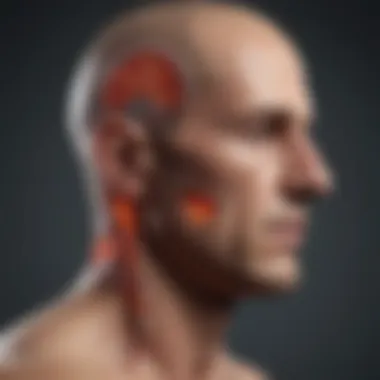
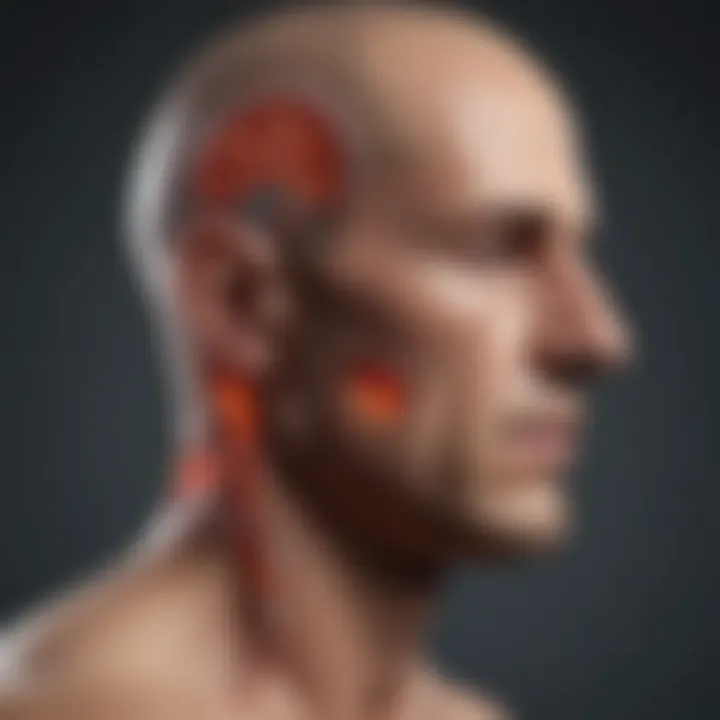
Neuroimaging is critical in visualizing brain structure and function. Techniques like Magnetic Resonance Imaging (MRI) and Computed Tomography (CT) scans play invaluable roles. They help identify structural problems, including tumors, lesions, or signs of stroke.
Modern neuroimaging technologies allow not just structural analysis but also functional insights. For example, Functional MRI (fMRI) assesses brain activity by detecting changes in blood flow. This can be integral in distinguishing between certain neurological disorders, allowing for more accurate diagnoses.
Neurophysiological Studies
Neurophysiological studies focus on measuring electrical activity in the brain. Techniques like Electroencephalography (EEG) monitor brain waves and can reveal seizure activity or abnormal sleep patterns. Such testing is crucial for disorders like epilepsy, where capturing a seizure on an EEG provides definitive evidence.
Similarly, Evoked Potentials track the brain's response to stimuli, assessing pathways involved in vision, hearing, and touch. These tests offer insights into the functionality of specific neural pathways, assisting in a more thorough understanding of a patient's condition.
Accurate diagnosis of neurological disorders relies on a combination of clinical assessments, neuroimaging, and neurophysiological studies. Each technique plays a role in shaping treatment strategies.
Treatment Modalities
Treating neurological disorders is critical for improving patients' quality of life. Each disorder presents unique challenges, which necessitates tailored treatment strategies. Therefore, understanding treatment modalities is vital in the broader context of neurological health. It allows healthcare providers to address symptoms effectively and improves the prognosis for individuals suffering from these conditions.
Pharmacological Interventions
Pharmacological interventions involve the use of medications to manage symptoms and, in some cases, address the underlying causes of neurological disorders. This approach varies widely depending on the specific disorder. For example, in conditions such as epilepsy, antiepileptic drugs are essential for seizure control. Similarly, patients with Parkinson’s Disease often benefit from dopaminergic medications to manage motor symptoms.
The effectiveness of pharmacological treatments can depend on various factors, including individual response and co-existing health conditions. Patients must work closely with their healthcare providers to determine the most effective drug regimen, striking a balance between symptom relief and managing potential side effects.
"Effective management of neurological disorders often requires a multi-faceted approach, including pharmacological treatments tailored to individual needs."
Therapeutic Approaches
Therapeutic approaches provide non-pharmacological options for managing neurological disorders. These can encompass a range of methods, including physical therapy, occupational therapy, and neuropsychological interventions. Each modality aims to enhance functioning and improve overall well-being.
Physical therapy is crucial for patients recovering from stroke or managing conditions like multiple sclerosis. It focuses on improving mobility, strength, and coordination. Conversely, occupational therapy assists patients in adapting their environment and routines, helping them to perform daily tasks more independently.
Neuropsychological interventions can address cognitive and emotional challenges. They help in coping strategies and provide tools to manage mood disorders often associated with neurological conditions.
Surgical Options
In some cases, surgical intervention may be necessary. Surgical options can provide relief from severe symptoms or even halt disease progression. For instance, deep brain stimulation is a technique used in patients with Parkinson’s Disease to alleviate symptoms when medications are no longer effective.
Another example is the surgical removal of tumors in cases where tumors are causing neurological impairment. Epilepsy surgery may also be considered for patients whose seizures do not respond to medication. Each surgical approach requires thorough evaluation and careful discussion of risks and benefits with the patient.
In summary, treatment modalities for neurological disorders encompass a diverse range of options, from pharmacological and therapeutic interventions to surgical solutions. Properly leveraging these modalities can lead to significant improvements in patient outcomes.
Advancements in Research
Research in neurology has seen significant advancements over recent years, offering new insights into the complexities of neurological disorders. Understanding these advancements is crucial for improving diagnostic methods, developing effective treatments, and enhancing patient outcomes. This section will delve into specific elements of current research trends, highlighting their potential benefits and considerations in the field of neurology.
Emerging Technologies
Emerging technologies are reshaping neurological research. Tools such as artificial intelligence (AI) and machine learning provide unprecedented capabilities to analyze vast datasets. Researchers can predict disease progression in conditions like Alzheimer's or Parkinson's based on these analyses. Moreover, wearable devices enable continuous monitoring of neurological symptoms, providing real-time data that support personalized treatment plans. This shift towards technology-driven solutions allows for greater precision in understanding and treating disorders.
- Benefits of Emerging Technologies:
- Faster and more accurate diagnosis of conditions.
- Enhanced patient monitoring and engagement.
- Improved understanding of disease mechanisms through data analytics.
However, these technologies also raise ethical concerns around data privacy and the need for regulatory frameworks to ensure patient safety.
Gene Therapy and Stem Cells
Gene therapy and stem cell research are at the forefront of neurological advancements. Gene therapy aims to treat or prevent disease by modifying the genetic material within a patient's cells. This approach holds promise for conditions like spinal muscular atrophy where specific gene defects play a critical role.
Stem cell therapy, on the other hand, offers the potential to regenerate damaged neurons. Research indicates that stem cells can differentiate into neural cells, thereby providing avenues for treating conditions such as Multiple Sclerosis and ALS.
"Gene therapy and stem cell technology represent a transformative approach in our quest to understand and treat neurological disorders."
- Specific Considerations:
- Need for extensive clinical trials to evaluate safety and efficacy.
- Ethical discussions surrounding the manipulation of genetic material and stem cell sourcing.
These advancements in gene therapy and stem cells hold a potential revolution for treatment modalities in neurology. They underscore the importance of an interdisciplinary approach involving geneticists, neurologists, and bioethicists to navigate the complexities of research and application.
The Role of Interdisciplinary Approaches
Interdisciplinary approaches play a significant role in understanding and treating neurological disorders. Neurology itself is a complex field, intersecting diverse specialties such as psychology, rehabilitation, genetic counseling, and more. Each discipline brings unique perspectives and expertise that can enhance our grasp of neurological conditions. Collaboration across these fields not only promotes better patient outcomes but also fosters innovative research methodologies.
An interdisciplinary approach enables healthcare professionals to develop comprehensive treatment plans that are more holistic. It allows for the integration of medical and non-medical approaches, catering to the multifaceted nature of neurological disorders. This collaboration also aids in identifying potential gaps in current treatment frameworks, paving the way for enhancements in both research and patient care.
Collaboration Between Disciplines
Collaboration among different disciplines is essential for holistic patient care. Neurologists often work with physical therapists, occupational therapists, speech-language pathologists, psychologists, and nutritionists. Each of these professionals contributes specialized knowledge that can address various aspects of a patient’s condition.
For instance, neurologists focus on diagnosing and managing medical interventions. At the same time, psychologists may support the emotional and psychological well-being of patients facing chronic neurological disorders. Physical and occupational therapists work on restoring function and mobility, which can be greatly affected by conditions such as stroke or multiple sclerosis. This multifaceted collaboration ensures that patients receive comprehensive care tailored to their unique needs.
- Increased understanding: Combining different areas of expertise can lead to a more profound understanding of the complexities involved in neurological disorders.
- Better outcomes: Patients often experience improved functional outcomes when their care involves a team of multidisciplinary professionals.
- Innovative research: Collaborative efforts often produce innovative research that might not emerge from a single discipline alone.
Medical and Non-Medical Interventions
The duality of medical and non-medical interventions highlights the significance of a comprehensive strategy in treating neurological disorders. Medical interventions typically include pharmacological treatments and surgical options. These aimed interventions are vital for managing symptoms, slowing disease progression, and improving patient quality of life.
However, non-medical interventions are equally important. These encompass therapeutic approaches like psychotherapy, cognitive-behavioral therapy, and lifestyle changes, such as diet and exercise. Engaging in rehabilitation programs can greatly benefit patients, helping them regain skills and adapt to their conditions.
- Pharmacological interventions: Address core symptoms and conditions (e.g., antiepileptic drugs for epilepsy, beta-interferons for multiple sclerosis).
- Surgical approaches: Explore surgical options for conditions such as Parkinson's disease or severe epilepsy.
On the non-medical side:
- Cognitive therapies: Assist patients in coping with changes in cognitive function.
- Lifestyle modifications: Including regular physical activity and balanced nutrition can have significant impacts on overall neurological health.


As interdisciplinary collaboration continues to grow, a more integrated treatment model emerges that includes both medical and non-medical perspectives, ultimately benefiting patients across the spectrum of neurological disorders.
Interdisciplinary approaches cultivate knowledge that leads to better treatment strategies, ensuring that both medical and non-medical care integrates seamlessly for patients affected by neurological disorders.
Impact of Lifestyle on Neurological Health
The impact of lifestyle choices on neurological health cannot be overstated. It plays a pivotal role in both the onset and progression of various neurological disorders. Understanding how diet, physical activity, and mental health can influence neurological function is essential. Evidence increasingly supports the idea that maintaining a healthy lifestyle can mitigate symptoms, enhance cognitive function, and possibly reduce the risk of developing neurological conditions. This section will explore critical elements related to lifestyle and its benefits while considering the risks associated with poor habits.
Diet and Nutrition
Diet is a foundational aspect of neurological health. The brain is an organ that requires specific nutrients for optimal functioning. A balanced diet rich in antioxidants, healthy fats, and vitamins can support brain health.
- Omega-3 Fatty Acids: These are crucial for neuronal function and are found in fish like salmon and in walnuts. Omega-3s have been linked to a reduced risk of Alzheimer's disease.
- Antioxidants: Foods such as berries, spinach, and nuts help combat oxidative stress. This stress can contribute to cell damage and the progression of neurological disorders.
- Vitamins: Specifically, B vitamins are vital for energy production and neurotransmitter function. They can be found in green leafy vegetables, whole grains, and legumes.
On the other hand, a diet high in processed foods, sugars, and unhealthy fats may negatively impact cognitive functions over time. It is essential for individuals to consider how their dietary choices can affect their neurological health in both the short and long term.
Physical Activity and Exercise
Physical activity significantly influences mental health and well-being. Regular exercise improves blood flow, which is essential for delivering oxygen and nutrients to brain tissues. It plays a crucial role in neuroplasticity, the brain's ability to adapt and change throughout life.
- Benefits of Exercise: Engaging in aerobic activities, such as running or swimming, can promote the release of endorphins, which enhance mood and cognitive function. Resistance training can also aid in improving strength and functionality as one ages.
- Exercise and Memory: Studies suggest that regular physical activity can slow cognitive decline, especially in older adults. Engagement in consistent routines encourages not only brain health but also overall physical health.
It is imperative to incorporate some form of physical activity into daily routine when possible. Simple activities such as walking, gardening, or even engaging in sports can make a significant difference in one's neurological well-being.
Mental Health and Stress Management
Mental health is intricately connected to neurological health. Chronic stress can lead to changes in brain structure and function, directly affecting cognition and behavior. Understanding the role of mental health in the context of neurological disorders is essential.
- Stress Management Techniques: Practices such as mindfulness, meditation, and yoga have shown positive effects on reducing stress levels. Adult learners and students can benefit greatly from integrating these into their daily lives, effectively enhancing mental resilience.
- Therapeutic Approaches: Engaging in therapy can provide essential coping strategies for managing stress and anxiety, which are crucial for maintaining cognitive function. Support from peers and professionals is vital for sustaining mental health.
Ethical Considerations in Neurology
Ethical considerations in neurology are critical to the practice and development of neurological care. Neuroscience, in its pursuit of understanding the brain and nervous system, often confronts complex moral dilemmas that influence patient care and research. These include issues related to patient rights, informed consent, and the ethical conduct of research. Addressing these aspects ensures that care is delivered responsibly while respecting the dignity and rights of individuals.
One primary focus within the ethical discussion is the recognition of patient rights and autonomy. Patients with neurological disorders often face significant challenges when it comes to their decision-making capabilities. This brings forth the question of how much decision-making power should be preserved for patients, especially when cognitive impairments affect their understanding. Clinicians should prioritize open communication and shared decision-making whenever possible. Ensuring patients are well-informed enables them to participate actively in their treatment options.
Moreover, understanding the ethical implications surrounding patient autonomy leads to protocols that optimize patient care. For instance, not only must the patient’s wishes be respected, but the healthcare team must also ensure that patients comprehend the complexities of their conditions and the ramifications of their choices. When we discuss autonomy in this context, we must acknowledge the sensitive balance between protecting a patient's rights and ensuring their well-being, especially in severe cases where decision-making may be compromised.
Patient Rights and Autonomy
In the realm of neurology, patient rights encompass a range of elements that ensure individuals receive the care they deserve. Among these rights is the necessity for informed consent. This involves adequately informing patients about their condition, treatment options, risks, and benefits, allowing them to make educated decisions. Often, neurological disorders can lead to changes in cognition that complicate this process. Therefore, awareness of the patient's baseline cognitive function is essential.
Additionally, respecting patient privacy and confidentiality is paramount. Neurological assessments might involve sensitive information regarding a patient’s mental capacity and neurological status. Upholding confidentiality builds trust, encouraging patients to be open about their symptoms and concerns without fear of stigma.
Another crucial aspect of patient rights is the right to seek second opinions. Patients may desire reassurance or further insights regarding their diagnosis and treatment. Providing resources to facilitate this access is ethical practice.
"Patient autonomy is not only a moral principle. It is an essential component to effective medical practice, especially in neurology."
The patient's active involvement can sometimes enhance treatment adherence and outcomes. However, it also poses ethical questions regarding informed consent that require careful consideration.
Research Ethics
Research ethics play a significant role in advancing knowledge in neurology while safeguarding the rights of study participants. Neurological research often involves vulnerable populations, such as those with neurodegenerative diseases or severe cognitive impairments. This vulnerability necessitates strict adherence to ethical standards in the design, implementation, and reporting of research.
The ethical framework for research should start with a thorough approval process from institutional review boards. These boards evaluate whether research proposals are ethically sound, ensuring that participant risks are minimized while potential benefits are maximized. Informed consent remains a critical aspect of ethical research practices, requiring researchers to communicate in clear terms relevant to the population involved.
Moreover, considerations should extend beyond patient consent to encompass the ethical treatment of animal models, when applicable. Ethical treatment should resist unnecessary suffering and promote the welfare of animals used in neurological studies.
Research ethics also encompass transparency in reporting and publishing results. Researchers in neurology must avoid conflicts of interest and ensure that their findings contribute positively to the broader scientific community. Full disclosure allows for external validation and promotes trust in both research outcomes and the healthcare system at large.
Future Directions in Neurology
Understanding the future of neurology is crucial for developing effective treatments and enhancing patient care. Medical professionals, researchers, and stakeholders look for renewed approaches to tackle complex neurological disorders. The exploration of future directions in neurology can help identify promising pathways and innovations that may significantly influence clinical practices and patient outcomes.
Trends in Research and Treatment
The landscape of neurology is continuously evolving. Researchers pursue an array of trends that promise to transform our approach to neurological disorders.
- Neuroinflammation: Studies indicate that inflammation plays a critical role in many neurological conditions such as Multiple Sclerosis and Alzheimer's Disease. Ongoing research investigates how modulating inflammation can lead to improved treatment strategies.
- Neuroprotection: There is growing interest in strategies to protect nerve cells from degeneration. Techniques like gene editing offer potential methods to halt cell loss in conditions like ALS and Huntington's Disease.
- Digital Health Solutions: The integration of technology in patient care is on the rise. Mobile applications and telemedicine alternatives provide support in managing symptoms, tracking progress, and facilitating regular consultations with specialists.
Benefits of Emerging Trends
- The application of new techniques can lead to earlier diagnoses and more personalized manging of disorders.
- Increased collaboration between various fields may yield interdisciplinary solutions.
Personalized Medicine Approaches
Personalized medicine is set to reshape the treatment of neurological disorders. This approach tailors medical decisions based on individual patient characteristics, including their genetic makeup, lifestyle, and environment.
- Genetic Testing: Identifying specific genetic markers allows for the development of individualized treatment plans. For example, certain genetic profiles may indicate higher risks for specific conditions, guiding preventive measures.
- Targeted Therapies: Drugs can be designed to target specific pathways or mechanisms involved in a patient's unique condition. This not only increases efficacy but can reduce side effects associated with traditional one-size-fits-all treatments.
- Patient-Centered Care: Engaging patients in their treatment decisions enhances outcomes. With personalized approaches, patients are more likely to adhere to treatment plans that resonate with their individual beliefs and preferences.
Focusing on personalized medicine could revolutionize neurology. It not only aims for efficacy in treatment but upholds the principles of patient autonomy and involvement in the healthcare process.
The End
The conclusion of an exploration into neurological disorders encapsulates the key findings, reinforcing the importance of understanding these complex medical conditions. As we have discussed, neurological disorders are not merely isolated maladies but represent a wide spectrum of issues affecting millions globally. This final section highlights how vital it is to acknowledge the diversity of these disorders, from common conditions like epilepsy to rarer ailments such as Huntington's disease.
Summary of Key Insights
Throughout this article, we have delved into several critical aspects:
- Definitions and Classifications: Neurological disorders can be classified by their presentation, such as acute vs. chronic, and primary vs. secondary. This classification is instrumental for healthcare providers in formulating accurate diagnoses and treatment plans.
- Symptoms and Diagnosis: Understanding symptoms, which can range from cognitive impairments to motor dysfunctions, allows for earlier diagnosis. The utilization of modern neuroimaging and neurophysiological studies enhances diagnostic accuracy.
- Treatment Modalities: From pharmacological interventions to therapeutic approaches, various treatment options are available. The expanded understanding of these modalities, along with new research trends like gene therapy, opens new doors for patient care.
By synthesizing these insights, we establish a robust foundation for further inquiry and application in fields related to neurology.
Overall Implications for Public Health
Recognizing the broader implications of neurological disorders in public health is critical. The increasing prevalence of conditions such as Alzheimer's disease serves as a pressing reminder of the societal burden these disorders entail. With an aging population, health systems worldwide are challenged to address the growing needs of affected individuals and their families.
Furthermore, improving public awareness about neurological health can foster proactive measures, such as better lifestyle choices and early intervention strategies.
"The future of neurology depends not just on treatment but also on prevention and education."







